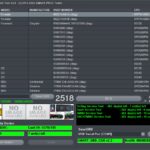Pc Based Automotive Diagnostic Tools have revolutionized how mechanics diagnose and repair vehicles. These tools, utilizing a computer or mobile device and specialized software, offer advanced capabilities compared to traditional standalone scan tools. This guide delves into the world of PC based automotive diagnostic tools, exploring their functionality, benefits, and various applications.
OBD (On-Board Diagnostics) systems in modern vehicles monitor emissions and diagnostic information. When a fault is detected, the OBD system provides crucial data about the problem. This data can include a snapshot of the conditions leading up to the fault and real-time sensor readings, enabling users to gauge vehicle speed, engine RPM, torque, and even calculate fuel economy.
Accessing this valuable information requires a diagnostic tool, commonly known as a scan tool. While standalone scan tools exist, they often lack the versatility and advanced features of their PC/Mobile-based counterparts. PC based automotive diagnostic tools leverage the power of computers and mobile devices, offering flexibility, upgradeability, and a broader range of diagnostic capabilities.
The connection between the PC based scan tool and the vehicle’s OBD2 system is established through a 16-pin connector usually located under the steering wheel. Data transfer occurs via USB, Bluetooth, Wi-Fi, or a Serial port, allowing the OBD software on the computer or mobile device to interpret and display the diagnostic data. This data empowers mechanics to pinpoint the root cause of vehicle problems efficiently.
The advantages of using PC based automotive diagnostic tools are numerous. Firstly, they provide access to a wider range of diagnostic data compared to standalone tools. This includes live data streaming, allowing mechanics to observe real-time sensor readings and identify intermittent issues. Secondly, PC based tools often come with extensive software that offers advanced features like coding, programming, and bi-directional control, enabling mechanics to perform complex tasks beyond simple diagnostics. Thirdly, the software for these tools is regularly updated, ensuring compatibility with the latest vehicle models and diagnostic protocols. Finally, PC based systems are often more cost-effective in the long run due to their upgradeability and the availability of open-source software options.
From reading and clearing diagnostic trouble codes (DTCs) to performing advanced functions like actuator tests and ECU programming, PC based automotive diagnostic tools are indispensable for modern automotive repair. They empower mechanics with the knowledge and tools needed to diagnose and fix complex vehicle problems efficiently and accurately, ultimately leading to improved vehicle performance, reduced repair times, and increased customer satisfaction.
